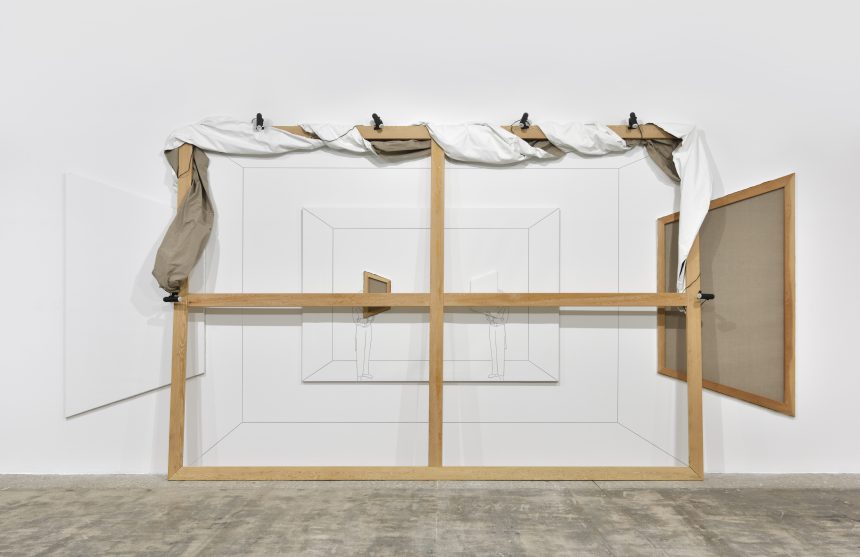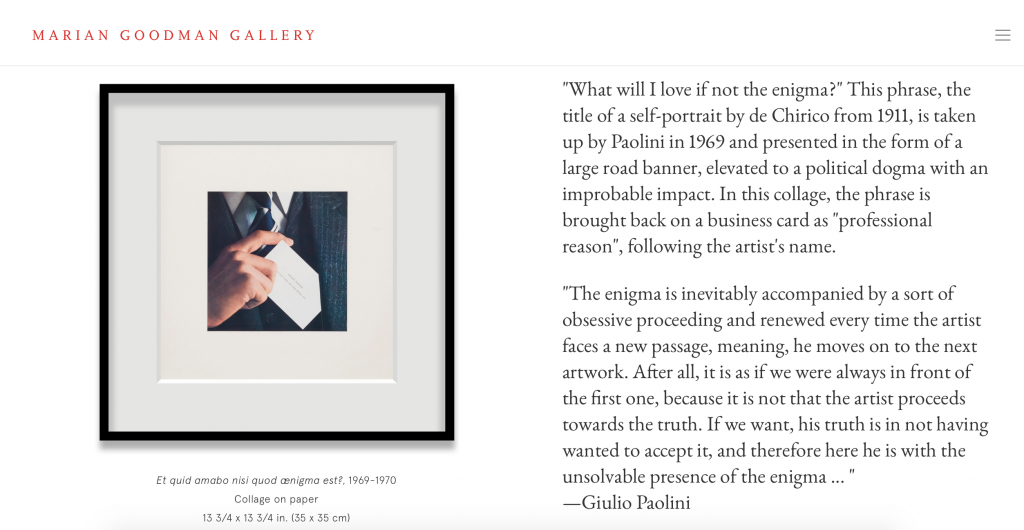Online and Looking In: Giulio Paolini’s “Belvedere” at Marian Goodman Gallery
The pandemic has forced the temporary closures of galleries accelerating a mass movement towards online exhibitions. However, navigating these shows through a computer screen can at times feel dull and aimless. At best, the 360-degree views can gratify our curiosity by allowing us to zoom in on artworks and discover details we would otherwise not notice in person. Needless to say, it will never be the same experience as viewing art in the flesh. So, how do we make the most of it?
The website of Marian Goodman Gallery provides us with a noteworthy example of how good and rewarding online exhibitions can be. In particular, “Belvedere”, a solo presentation by Italian artist Giulio Paolini, proves almost as exciting as (and possibly more informative than) visiting a similar exhibition in a physical gallery space.
Screenshot of Giulio Paolini, “Belvedere” on Marian Goodman’s website © Marian Goodman Gallery
Instead of implementing a static white cube replica, the gallery took an artist-centric approach to its content. This strategy points to an extensive understanding of Paolini’s artistic practice, and enhances the readability of the showcased collages, prints, and installations produced by the artist from the mid-1960s up until 2019.
The Author as Spectator
The virtual exhibition begins with a two-and-a-half-minute interview. Paolini declares, “I claim that the artist, or the author, must not emphasize himself or his own individual convictions. But rather, consider himself as a witness of his work”. Since the 1960s, he has been making artworks that carry his complex and deliberate musings on poetics. The artist has often explored themes that question authorship and the conception of how we view art. He argues that instead of single authors, art history is made up of “a system of voices in unison” and that the role of the artist today is to look at that balance in becoming both author and spectator.
Due personaggi in cerca d’autore (Two Characters in Search of an Author), 1996, reinforces this sense of duality. The title is a reference to a 1921 comedy of the Italian playwright, Luigi Pirandello (“Six Characters in Search of an Author”). In the installation piece, a large stretcher with clip-on spotlights leans on a wall where an illustration of a perspective room rests. Hidden from our gaze are fragments of the work, particularly the faces of the two figures in the drawing and the artist who has left the mise en scène (or maybe, is looking in from afar). Thus, making the painting “authorless”.
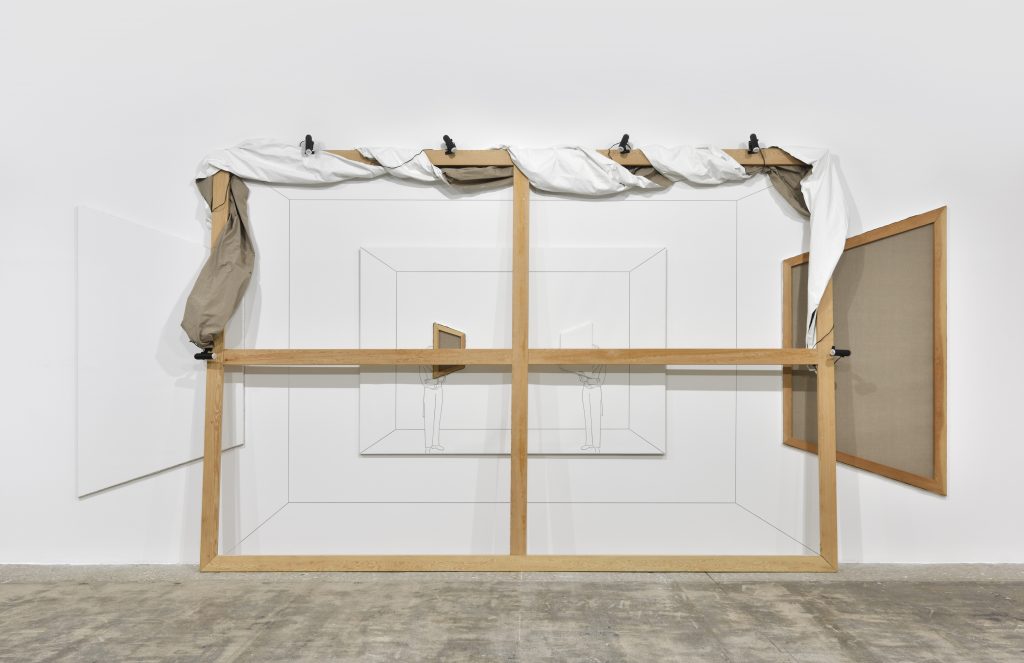
Giulio Paolini, Due personaggi in cerca d’autore (Two Characters in Search of an Author), 1996 © Giulio Paolini. Photo Rebecca Fanuele. Courtesy Fondazione Giulio e Anna Paolini, Turin
The conceptual and the metaphysical
Considered the most cerebral and conceptual among the Arte Povera’s group of artists, Paolini commonly used references from Philosophy and Literature, as is the case with Zeusi e Parrasio (Zeuxis and Parrahasius), 2007-2017. The multiple images of a bust, the lines, and the blocks that form a collage, prompt us to remember the Greek painters, and a story that deftly involves illusion and perception in art.
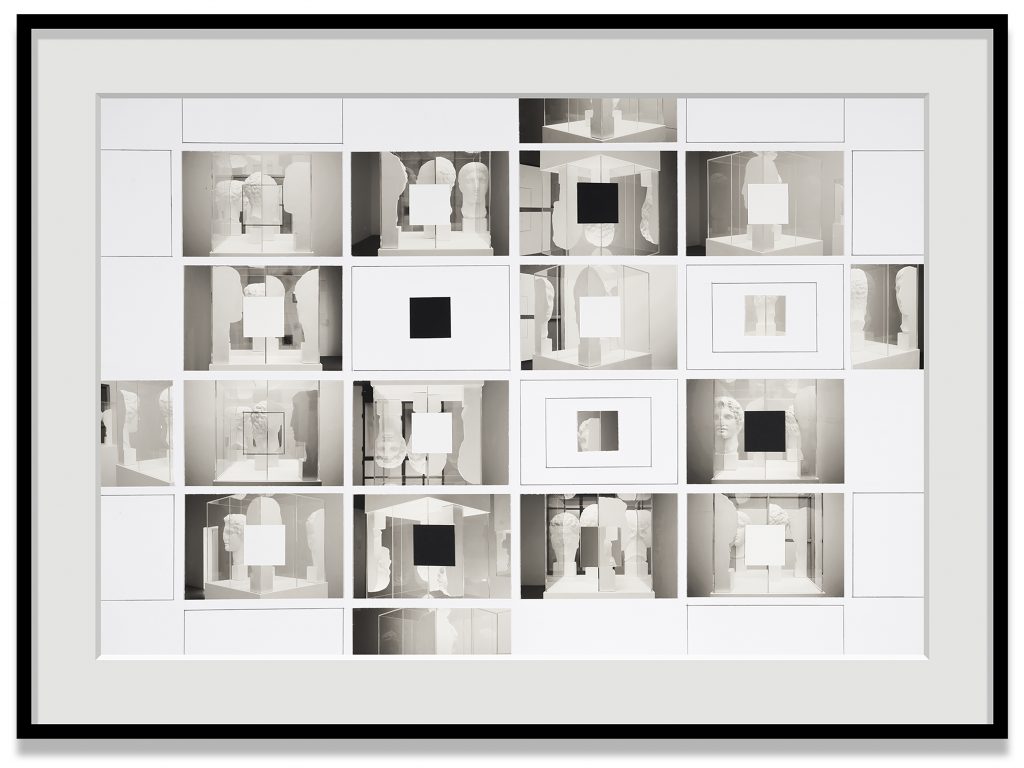
Giulio Paolini, Zeusi e Parrasio (Zeuxis and Parrahasius), 2007-2017 © Giulio Paolini. Photo Luca Vianello. Courtesy Fondazione Giulio e Anna Paolini, Turin Another collage, Per Oscar Wilde (To Oscar Wilde), 2017, contains an image of a painting which identifies the poet, Oscar Wilde.
In the scene, other distinguished names from the Victorian era walk through an exhibition at the Royal Academy of Arts in 1881. Paolini recomposes the artwork by rotating the image, drawing squares, and adding frames in the composition. Those who have read Wilde’s formative novel The Picture of Dorian Gray (1890) should find themselves having a quiet laugh.
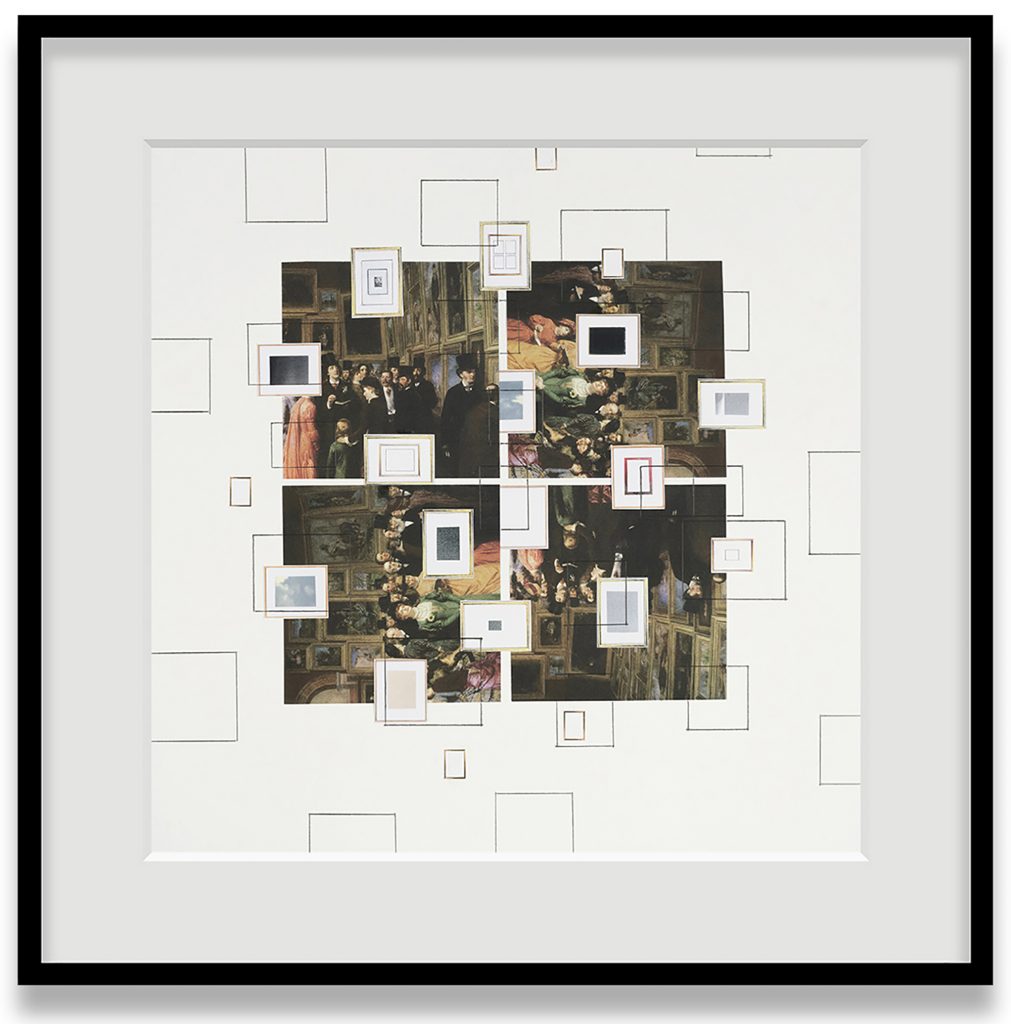
Giulio Paolini, Per Oscar Wilde (To Oscar Wilde), 2017 © Giulio Paolini. Photo Luca Vianello. Courtesy Fondazione Giulio e Anna Paolini, Turin
Today, scrolling is becoming the new normal; the new “exhibition walkthrough”. Perusing through Paolini’s viewing room, the advantages of visiting an online exhibition come into focus. Goodman’s creative format gives a holistic overview of Paolini’s work which narrates the artist’s career in an intriguing, dynamic and introspective fashion. We are able to take in the exhibition in the safety of our own homes and at best contemplate the artist’s practice in a new light. The video interview and written quotes by the artist also contribute to a richer experience and understanding of the work.
As the artworld continues its emphatic expansion of online initiatives, conceptual art remains undiminished and translates its cleverness well through our computer screens. Paolini’s sharp-witted arrangement of materials, objects, and images can cause ennui to those who are at ease with less subtle clues. However, the rest of us who find delight in bewilderment and dry humour are bound to be graciously rewarded.

